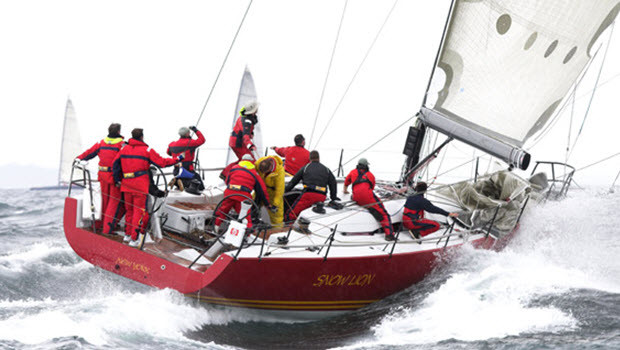transatlantic race 2011 from ws lirakis on Vimeo.
Offshore racing: All-consuming and enormously energizing
A lot has changed in offshore sailing since Larry Huntington first raced across the Atlantic in 1957. Advances in yacht design, construction and materials have made the boats exponentially faster and more durable. Modern communications enable boats to remain in touch with other competitors and the rest of the world throughout the nearly 3,000-mile journey. But the essence of the adventure remains much the same.
“Going across the Atlantic is a fantastic change of pace from everyday life,” says Huntington, who is a former commodore of the New York Yacht Club, which will co-host the race with the Royal Yacht Squadron, in association with the Royal Ocean Racing Club and the Storm Trysail Club.
“It’s a chance to think about what Joseph Conrad wrote about the mystery of the sea. ‘The true peace of God begins at any spot a thousand miles from the nearest land.’ All of that goes through your head as you do this kind of adventure. It’s a wonderful time for reflection. It’s also intensely competitive. I find it all-consuming and enormously energizing.”
So it’s no surprise, that more than a half century after his first trip across the Atlantic, Huntington’s 50-foot Snow Lion was one of the first boats to enter into the 2015 Transatlantic Race, which will start from Newport, R.I., in late June and early July of 2015 and finish at Lizard Point, on the southwestern corner of England.
With 15 months until the first gun is fired from Castle Hill in Newport, R.I., more than 20 boats have entered and nearly 70 others have expressed interest. The fleet for 2015 is expected to reach its limit of 50 boats, nearly double the 26 boats that competed in the race in 2011.
“We’re extremely pleased with the significant early interest in this race,” says Royal Yacht Squadron’s Rear Commodore Yachting David Aisher. “The history of the transatlantic race dates back to the birth of recreational ocean racing in the late 1800s. More than a century later, it remains one of the ultimate tests of yachting skill.”
This will be the third Transatlantic Race for Snow Lion, a 50-foot boat designed by Jason Ker and built in 2006. There is an adage that says distance racers should never sail on any boat that is shorter in feet than their age. Huntington, who will be 80 when the race starts, clearly doesn’t subscribe to that theory.
“I had seen some of Ker’s previous designs and admired how they behaved and looked,” says Huntington. “We kept losing races to other Ker designs, so I figured [building one for myself] was a good thing to do.”
In 2011, it took Huntington’s team more than 15 days to complete the course. While that race was notorious for light and challenging wind conditions, the transatlantic course is still one of the longest regular races open to amateur sailors.
“First and foremost, you need a really compatible, competent crew,” says Huntington of the keys to success. “If you have full confidence in your shipmates, everyone gets the proper amount of rest and then you can address whatever Mother Nature wants to throw at you.”
Race website: www.TransatlanticRace.org
– See more at: http://www.sailingscuttlebutt.com/2014/04/01/offshore-racing-consuming-enormously-energizing/#sthash.NO8bexoc.dpuf

